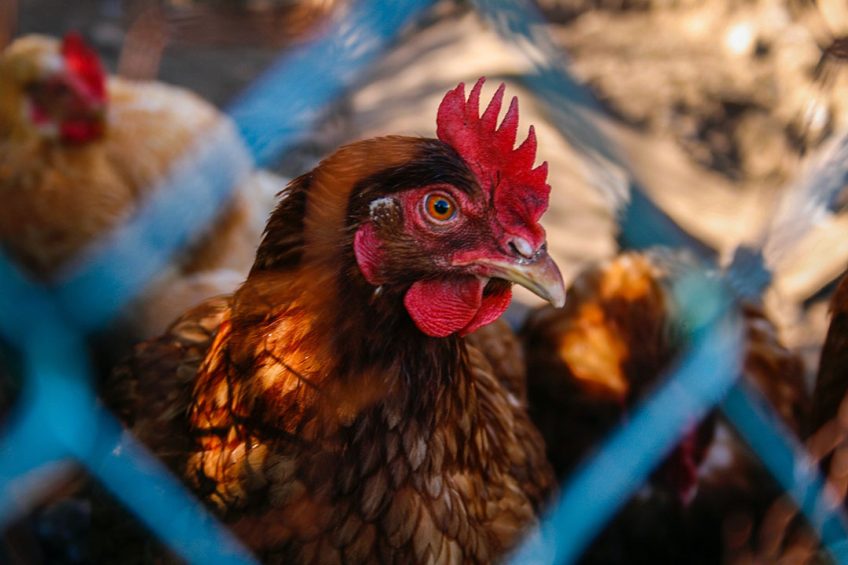Study compares 4 Dutch broiler production systems

Animal welfare gets a lot of attention in the Netherlands, and for broiler chickens; stocking density and broiler growth rate are discussed in depth. Several alternative broiler production systems have been developed. A study set out to compare 4 systems.
For each production system the production costs and revenue are calculated. The comparison is made for the year 2017.
4 broiler production systems were compared:
- The conventional broiler production system uses minimum legal requirements as set by the European Union with some additional rules set by the Dutch government. The broilers are usually fast-growing and housed at a maximum stocking density of 42kg/m2, based on indoor housing. This system represents around 65-70% of total broiler production in the Netherlands.
- The Dutch Retail Broiler (DRB) is defined by the so-called ‘Chicken of Tomorrow’ agreement between the Dutch poultry sector and Dutch retailers. The system uses a slower-growing breed with a maximum daily growth of 50g, a stocking density of maximum 38kg/m2, and provides environmental enrichment based on indoor housing.
- The Better Life one Star (BLS) system was developed by the Dutch Society for the Protection of Animals. A slower-growing breed (slaughter age at minimum 56 days) must be used, and a stocking density of maximum 25kg/m2 must be applied. Additional requirements are a covered outdoor area and environmental enrichment (bales of straw and grain for scratching/pecking).
- The organic broiler production system has very strict requirements on housing and management, as well as welfare. A slow-growing breed (slaughter age of at least 70 days) is used at a stocking density of maximum 21kg/m2. A free-range area should be provided to the birds, and the broilers are to be fed organic feed.
Cost of day-old chicks
Day-old chicks of slow-growing breeds are more expensive than conventional breeds. For DRB, BLS and organic the day-old chicks are more expensive. For organic the costs are even higher because of an extra vaccination in the hatchery.
Feed, the biggest cost
Feed costs are the largest cost component for the broiler farmer: around 60% of the total costs, in the conventional system. The feed costs are a combination of feed intake and feed price. The feed price is slightly lower for the DRB and BLS compared to conventional systems, because slow-growing broilers get feed with a lower protein content than conventional broilers. However, slow-growing broilers take more growing days to reach slaughter weight compared to the conventional broilers. Organic broiler feed is far more expensive because the feed ingredients must be produced organically, without artificial fertilisers and pesticides.
The total feed cost per kg live weight is substantially higher for DRB (57 eurocents) and BLS (62.2 eurocents), compared to 49.6 eurocents for the conventional system. The feed costs per kg live weight of organic broilers is 172.3 eurocents, 70% of total production costs. For the technical results the data for conventional, DRB, BLS and organic were: growing period to a live weight of 2.4kgs, respectively, in 41 (with thinning), 49, 56 and 75 days with a feed conversion of 1.60, 1.90, 2.10 and 2.65.
Costs to keep the chickens healthy
In the conventional systems, costs relating to animal health (vaccinations, veterinarian, laboratory research costs, medication, etc.) are 5 eurocents per broiler. The costs in the DRB and BLS are slightly lower because of a lower antibiotic use, and for organic farms these costs are much higher as a result of small-scale production.
Housing and heating
Other variable costs include heating, electricity, litter/bedding material, catching and enrichment. All cost components increase when moving from the conventional system to DRB, to BLS and organic. Compared to conventional the costs for heating and electricity are higher for DRB and BLS. For BLS the costs of heating are 80% and for electricity 60% higher than conventional. Lower electricity costs for organic broilers are due to natural ventilation in the poultry house.
For BLS, providing grain is compulsory. 2 weeks after the beginning of the growing period the broilers should have 2g of grain per day per broiler. The costs are 1.5 eurocents per broiler.
In the conventional and DRB the broilers are kept in a regular broiler house. The investment in the building is € 205/m2. In the BLS system a covered outdoor area must be added, with an investment of € 170/m2 surface. Organic broilers are kept in a more basic poultry house with investment costs of € 105/m2. The investment in equipment in a standard poultry house (conventional, DRB) is € 100/m2. These investments are lower for the BLS (€ 80) and organic system (€ 55).
Final figures per kg liveweight
For all 4 production systems the production costs are calculated per kg live weight. Total production costs for conventional were 83 eurocents per kg live weight. Total production costs for DRB, BL were 99.5 eurocents (+20%) and 119 eurocents (+44%). Production costs of the organic broilers are almost 3 times higher than the conventional system, at 242 eurocents per kg live weight (+193%).
This research was conducted by Wageningen Economic Research and is part of the Greenwell project, in which Wageningen Economic Research cooperates with Wageningen Livestock Research. The project is commissioned and funded by the Ministry of Agriculture, Nature and Food Quality and companies Aviagen EPI, Belgabroed/Van Hulst, De Heus BV, and Plukon Food Group.













